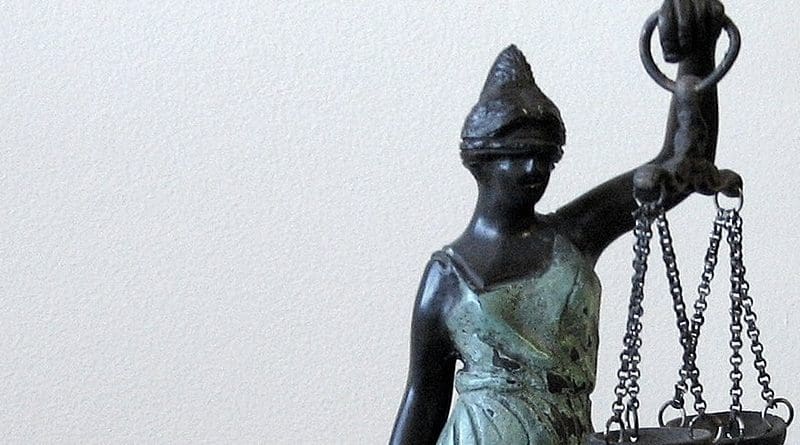A Dangerous Precedent In Sri Lanka: The Supreme Court And The Dissolution – OpEd
The Supreme Court was presented with a relatively simple case when entities which did not approve the dissolution of Parliament challenged President Sirisena’s proclamation. It was a simple case because the latest amendment (19) made to the Constitution explicitly stated that the President “shall not” dissolve Parliament within the first four and a half years of its first meeting.
Many people like me expected the Supreme Court to deliver an “express” verdict following the first hearing itself, precisely because of the simplistic nature of the case. A quick verdict could have also been justified by the need to restore sanity and stability to the system.
The Court did not agree. First, it postponed the decision to December 7 and then formed an expanded bench to hear the case. Again, the Court deferred the decision to December 10. The implication being that, according to the opinion of the Court, it is not a simple and straightforward case to decide. When the case is not easy to determine, the verdict could go either way.
If the Court decision goes in favor of the President and his decision to dissolve Parliament before the stipulated four-and-a-half-year period, the delay and the expansion of the bench would serve as a shock absorber. A considerable amount of people expects the Court to disapprove the dissolution.
They will be disappointed and may criticize the Court for being corrupt. By delaying the verdict, the Court also allowed members of the bench to endure political pressure as too many political power players may be working to influence the decision of the Supreme Court. Hence, fingers crossed in term of the final decision of the Court.
A decision to uphold the dissolution of Parliament would create a bad and dangerous precedent. Reports of the court proceedings indicate that one of the main arguments of the respondents in this case was that the action of the President was critical to save the country from a serious predicament.
The reported “ambulance” analogy indicates that they believe that the measure should be approved even if the dissolution is illegal and unconstitutional. Approving such as an argument will prove to be disastrous for the country in the long term.
As far as I know, no political leader who grabbed power illegally ever stated that he/she had done it to promote a self-serving agenda. All illegal power-grabbing actions are justified by the need to serve the national interest. The current Sri Lanka situation is no different. Therefore, if this action is approved, Sri Lanka presidents in the future can dissolve parliament any time they want without any restrictions making people’s sovereignty a mockery.
They can justify untimely dissolution of parliament by using one or another existing issue and painting them as a crisis. Hence, a decision to uphold the dissolution will confer unlimited powers on the president as parliament will be unable to exercise any control on the chief executive. Parliament will be under constant fear of dissolution because any challenge will force them to face new elections. This will transform the already powerful presidency into a formally semi-authoritarian institution by irreparably damaging the balance of power between the president and parliament.
One does not need to remind readers that Sri Lanka is always in some sort of crisis. It is a land of protests and strikes. There are plenty of problems that can easily be exploited by a motivated president to justify the dissolution of parliament. Moreover, a crisis could be manufactured as well.
The existing problem itself is a manufactured crisis.
The Court needs to take into consideration two different types of crises that encompass the current imbroglio. When Mahinda Rajapaksa was appointed Prime Minister by the President, parliament did not have a problematic environment. Ranil Wickremesinghe proved his majority in Parliament without the votes of the UPFA in April. However, it was the outside environment that was used to argue that the country was in a crisis and needed to be saved by a new power-structure consisting of Sirisena and Rajapaksa at its helm.
The depreciating Sri Lankan rupee and the economic woes of the country were cited by the Sirisena-Rajapaksa combo to dismiss Wickremesinghe headed administration and install a new regime headed by Mahinda Rajapaksa. The alleged corruption of the government was also discussed considerably. Of course, the Rajapaksa headed government did not have the required numbers in Parliament leading to a chaotic disgrace in the national legislature. The inability to prove their majority and the inability to face the challenge of Parliament to President Sirisena and Rajapaksa government, eventually forced the President to dissolve Parliament.
So, when the respondents in the Supreme Court argue that the dissolution was necessary to deal with the crisis, which crisis are they talking about? The perceived crisis in the country or the crisis in Parliament?
The crisis in the national legislature could have been resolved by allowing the party with a provable majority to continue the administration and have the election after four and a half years or five years. It was the undemocratic move of the President that ignited the parliamentary crisis. Hence, the President cannot use the Supreme Court to take advantage of a crisis he himself created. Upholding the decision to dissolve Parliament would amount to rewarding the wrongdoers. Also, the way the crisis was manufactured and used to dissolve Parliament successfully may serve as a blueprint for future violations.
Hence, the Supreme Court decision on the dissolution of Parliament by President Sirisena would be a landmark verdict regarding democracy in Sri Lanka in the long term.

